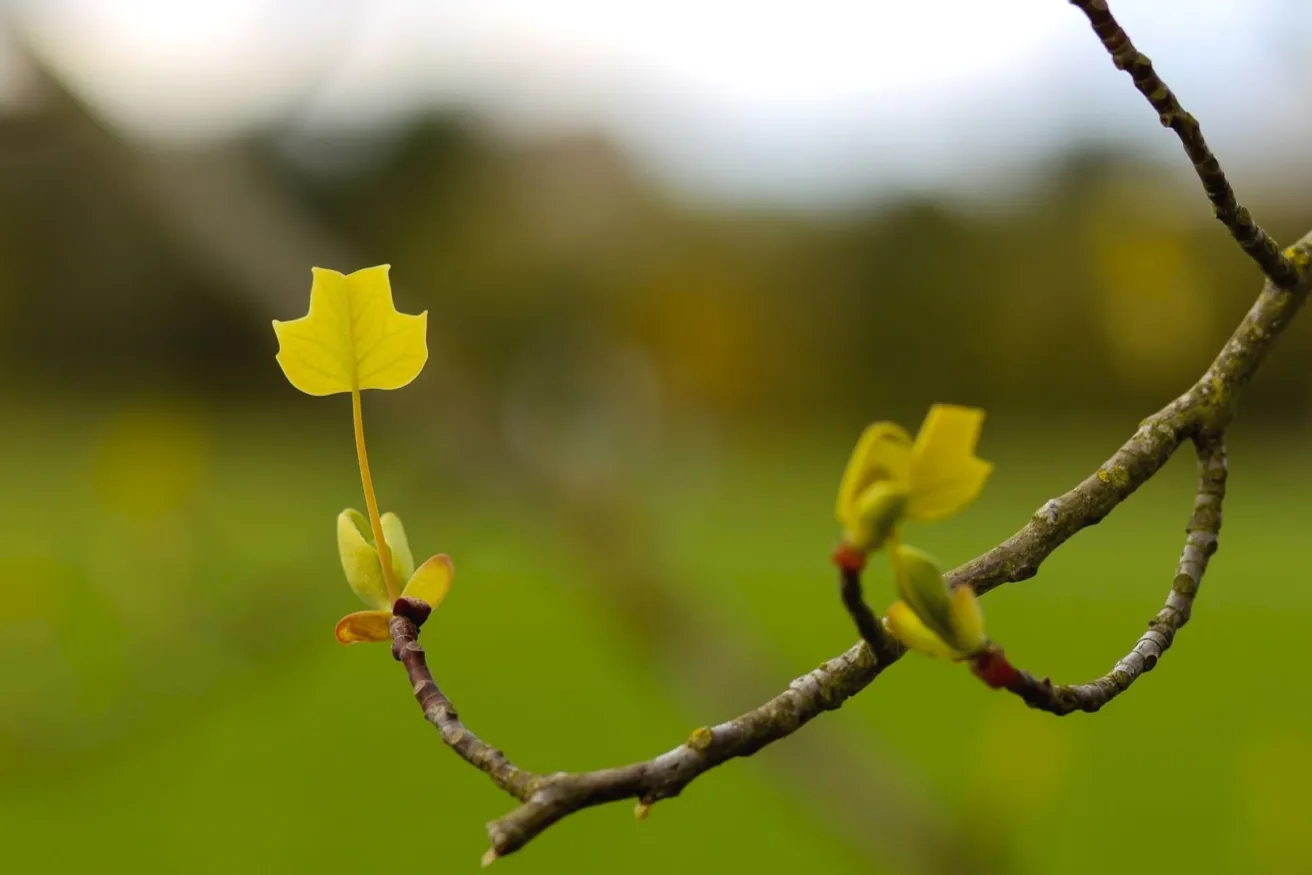Give before midnight on July 31 to double your impact where trees need us most. CHOOSE A PROJECT
Liriodendron tulipifera
“Imagine a tall tree with unearthly foliage and 5,000 tulips in its hair.”
— Thomas Pakenham, Meetings with Remarkable Trees
Tuliptrees seem to inspire poetic interpretation. Leaves appear snipped off at the tips by supernatural scissors, forming the silhouette of a stylized tip. The tree’s flowers, the real reason for the name tuliptree, stand singly at the tips of twigs — six large, yellowish petals that to American naturalist Donald Peattie, “hold the sunshine in their cups, setting the whole giant tree alight.” Later in the season, dry, cone-like fruits continue the picturesque parade with their resemblance of little torches held boldly aloft.
The glorious tuliptree is the state tree of Indiana and Tennessee, it is the tallest of the eastern hardwoods and grows rapidly when conditions are right. In fact, writer Hugh Johnson notes that a “seedling with all its prayers answered has grown 50 feet in 11 years!”
Tuliptree: A Flower bed in the Sky
Tuliptree is valued in the forest for its magnificent form that yields a wide range of useful wood products. In the city, it is appreciated in parks or other large spaces for its beauty and relative absence of pest problems.
What’s in a Name?
One can argue about whether the “tulips” of tuliptree are the outline of its leaves, or its cup-shaped flowers, but both undoubtedly contributed to the fanciful name given this tree by early settlers. Yellowpoplar is another common name, either hyphenated or run together to indicate it is not a true poplar. This name is frequently used by loggers and foresters and derives from the yellow color often found in its heartwood. Sometimes the wood is more white than yellow, giving rise to the name whitewood or white tree which is used in some localities. Saddle-leaf tree is another local one not heard much anymore.
The scientific name was given to this tree by the great Swedish botanist, Linnaeus. The genus name, Liriodendron is from the Greek word, leirion, or lily, in reference to its flowers. Dendron, also from Greek, means tree. Thus, still another name — lily tree. The species name he applied is tulipifera, meaning tulip-bearing. A tulip-bearing lily-tree? Perhaps Linnaeus was getting a bit carried away. One more floral connection is that tuliptree is a member of the Magnolia family, a group well known for its showy flowers.
Catch up on The Feisty River Birch.




